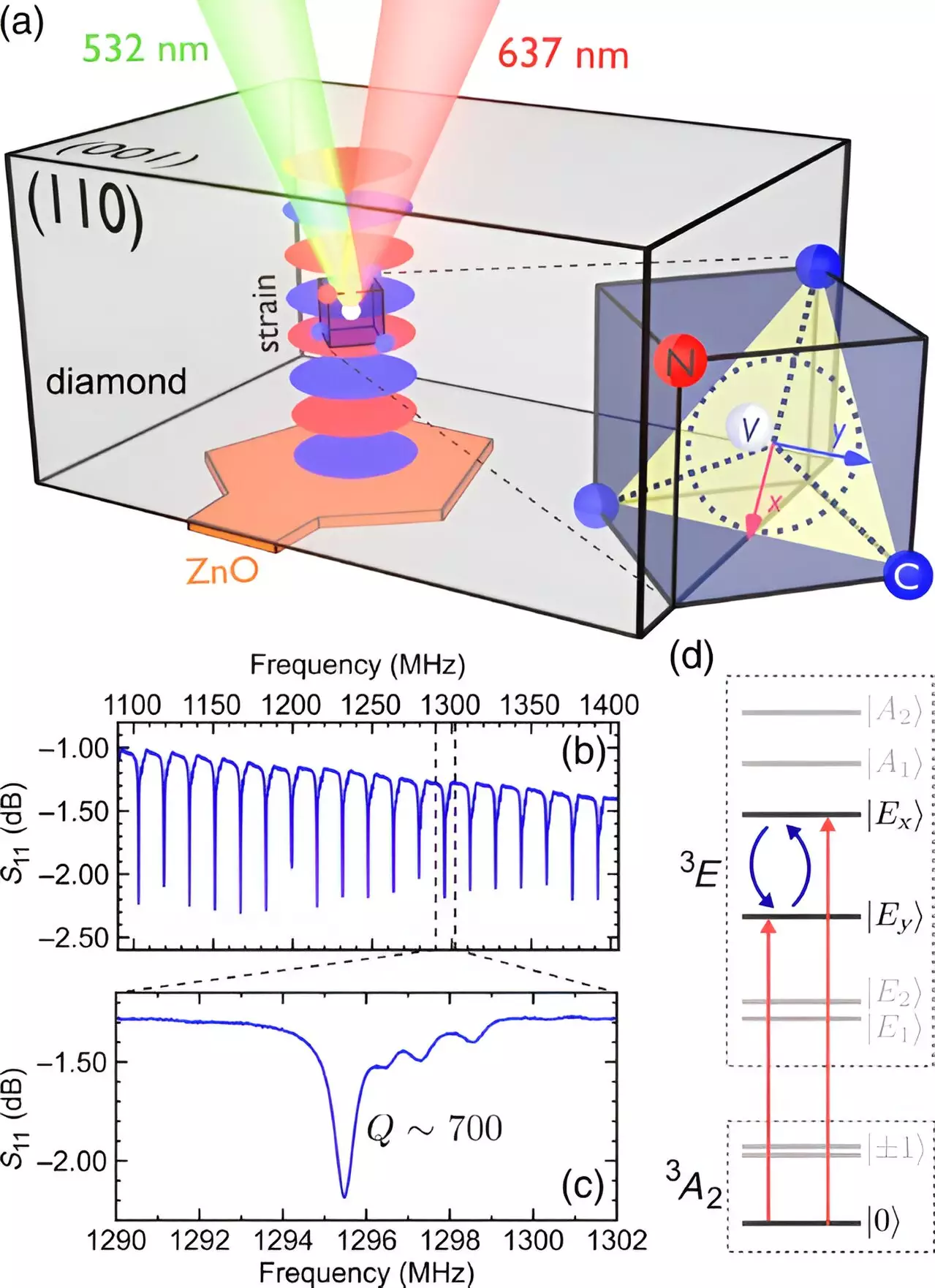In a groundbreaking study conducted by Cornell University researchers, the potential of acoustic sound waves in controlling the motion of electrons within a diamond lattice defect has been unveiled. This discovery opens new doors for enhancing the sensitivity of quantum sensors and revolutionizing the field of quantum devices. The research, titled “Coherent acoustic control of defect orbital states in the strong-driving limit,” showcases the collaborative efforts of experts in applied and engineering physics and physics, shedding light on the innovative use of sound waves for driving “quantum jumps” between electron orbits.
Lead by Gregory Fuchs, a professor of applied and engineering physics, and his postdoctoral associate, Brendan McCullian, the study involved the construction of a microscopic speaker on the surface of a diamond chip. This speaker emitted sound waves at a frequency precisely matching an electronic transition, allowing for the coherent control of a single electron within the diamond chip. By employing techniques reminiscent of those used in magnetic resonance imaging, McCullian successfully demonstrated the manipulation of electron behavior through acoustic stimulation.
At the heart of quantum information technology lies the concept of qubits, the quantum counterpart to classical bits. To be useful, qubits must remain coherent – in a stable state – which is a delicate balance easily disrupted by environmental factors. Traditionally, spin resonance techniques utilizing microwaves and magnetic fields have been employed to extend qubit coherence times. Fuchs and his team pushed the boundaries by exploring the extension of these techniques into the acoustics domain, aiming to improve the coherence of electron orbitals through a novel approach.
The successful acoustic driving of orbital states, akin to spin resonance techniques, revealed promising results in enhancing qubit stability. Fuchs emphasized the significance of applying established spin resonance toolbox concepts, such as coherent control and Rabi oscillations, to the realm of orbital states. This crossover of methodologies showcased the adaptability and validity of known techniques in a new context. Furthermore, the study contributes significantly to the understanding and development of the nitrogen-vacancy (NV) center, a crucial defect in diamond crystal lattices with immense potential for sensing and quantum networking applications.
The ability to combat environmental fluctuations, such as spectral diffusion, holds immense promise for advancing quantum networking applications. By investigating the interaction of the NV center with noise sources and modifying this interaction using spin resonance tools, the researchers have paved the way for a more stable and reliable quantum computing environment. This breakthrough not only expands scientific knowledge but also offers practical solutions for real-world quantum technology challenges.
The collaboration between the research teams highlights the power of multidisciplinary approaches in scientific discovery. Combining experimental techniques from one lab with theoretical analysis from another, the researchers were able to deepen their understanding and frame their predictions effectively. This collaborative model serves as a blueprint for future innovative endeavors, emphasizing the importance of teamwork in pushing the boundaries of scientific exploration.
The use of acoustic sound waves to control electron motion within a diamond lattice defect represents a significant advancement in quantum technology. The study’s findings not only demonstrate the potential for improving qubit coherence but also underscore the importance of interdisciplinary collaboration in scientific breakthroughs. As researchers continue to explore the applications of sound waves in quantum devices, the future of quantum technology looks increasingly promising.


Leave a Reply